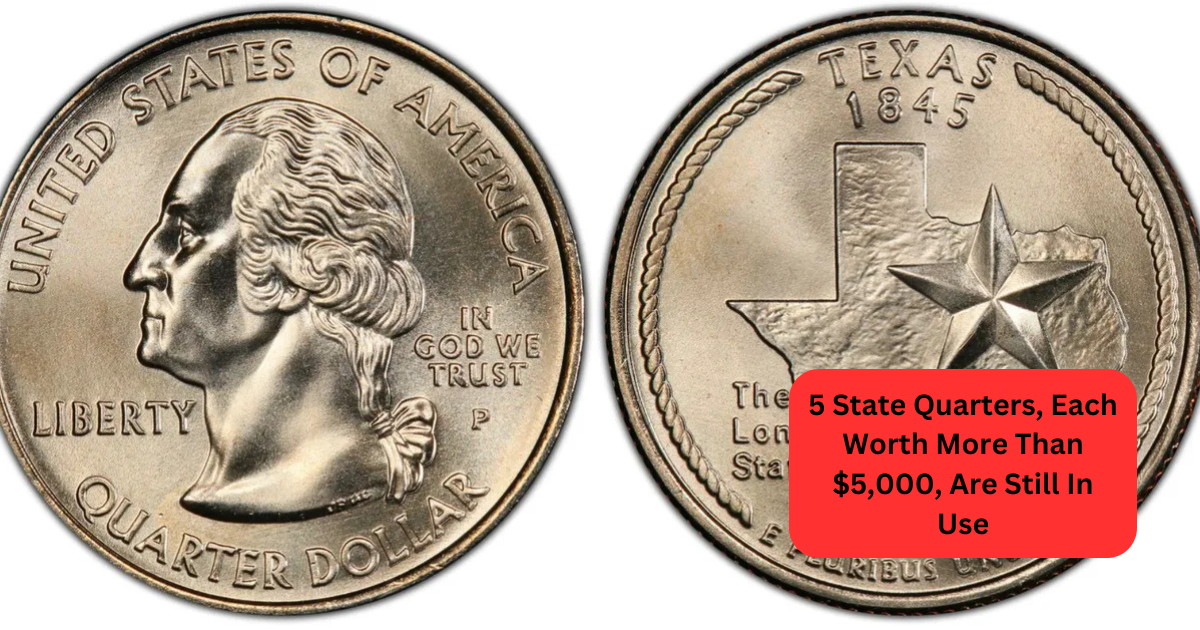One of the most prized coin series in American history is the state quarter. From 1999 to 2008, these coins embodied the essence of each state and were produced as part of the 50 State Quarters Program.
Although the majority of state quarters have standard face value, the value of select uncommon variations and mistakes has soared to over $5,000. We examine five state quarters that every collector ought to be aware of below.
1999 Delaware Spitting Horse Quarter
Among the first and most well-known mistakes in the State Quarters Program is this coin. The coin has an additional die crack that makes it look like the horse on the reverse is spitting, which is known as the “Spitting Horse” mistake. Because of this flaw, collectors are vying for it.
2004 Wisconsin Extra Leaf Quarter
The uncommon “Extra Leaf” version of the Wisconsin quarter made it famous. Due to a die fault, some of these coins have an extra leaf on the left side of the corn stalk. The “Low Leaf” and “High Leaf” variations are the two types, and they are both valued at thousands of dollars.
2005 Minnesota Doubled Die Quarter
An issue known as a “doubled die” occurs on the Minnesota quarter, causing multiple pictures of trees to appear in the backdrop. The coin has become a rare collector’s item because to its remarkable oddity; some specimens have sold for high sums at auction.
2000 New Hampshire Old Man of the Mountain Quarter
A die crack that runs through the Old Man of the Mountain’s representation is the most well-known design defect in this quarter. The mistake gives the coin a distinctive visual component that greatly raises its worth in the eyes of numismatists.
1999 Georgia Off-Center Quarter
Off-center strikes, a manufacturing fault that happens when the coin blank is not correctly aligned with the die, are a notorious feature of the Georgia quarter.
These coins can fetch high prices from collectors who are keen to acquire these eye-catching rarities, depending on how severe the misalignment is.
The State Quarters Program brought some extremely expensive rarities into circulation in addition to offering a glimpse into America’s cultural and historical legacy. The peculiarities of minting and the timeless appeal of numismatics are both demonstrated by these coins.
FAQs
What makes these state quarters valuable?
Errors that are uncommon during the minting process, including die fractures, duplicate dies, or misalignments, make state quarters valuable.
Are these quarters still in circulation?
Indeed, there are still some of these quarters in use, but the likelihood is quite low because collectors have collected a lot of them.
How can I identify a rare state quarter?
Look attentively at your quarters under magnification to check for mistakes like excess features, misalignments, or design doubling.

